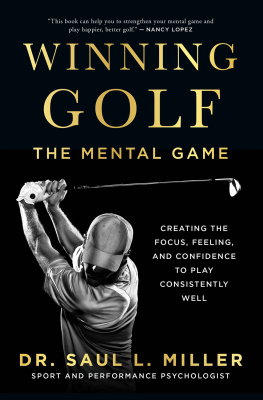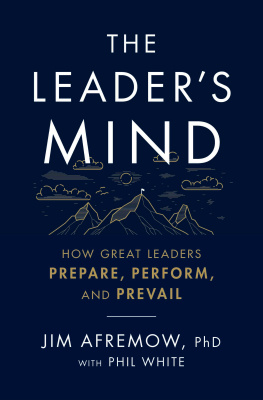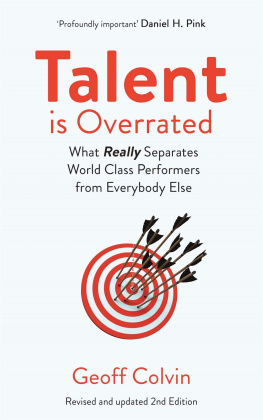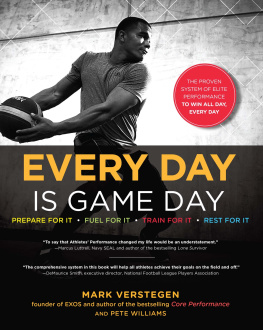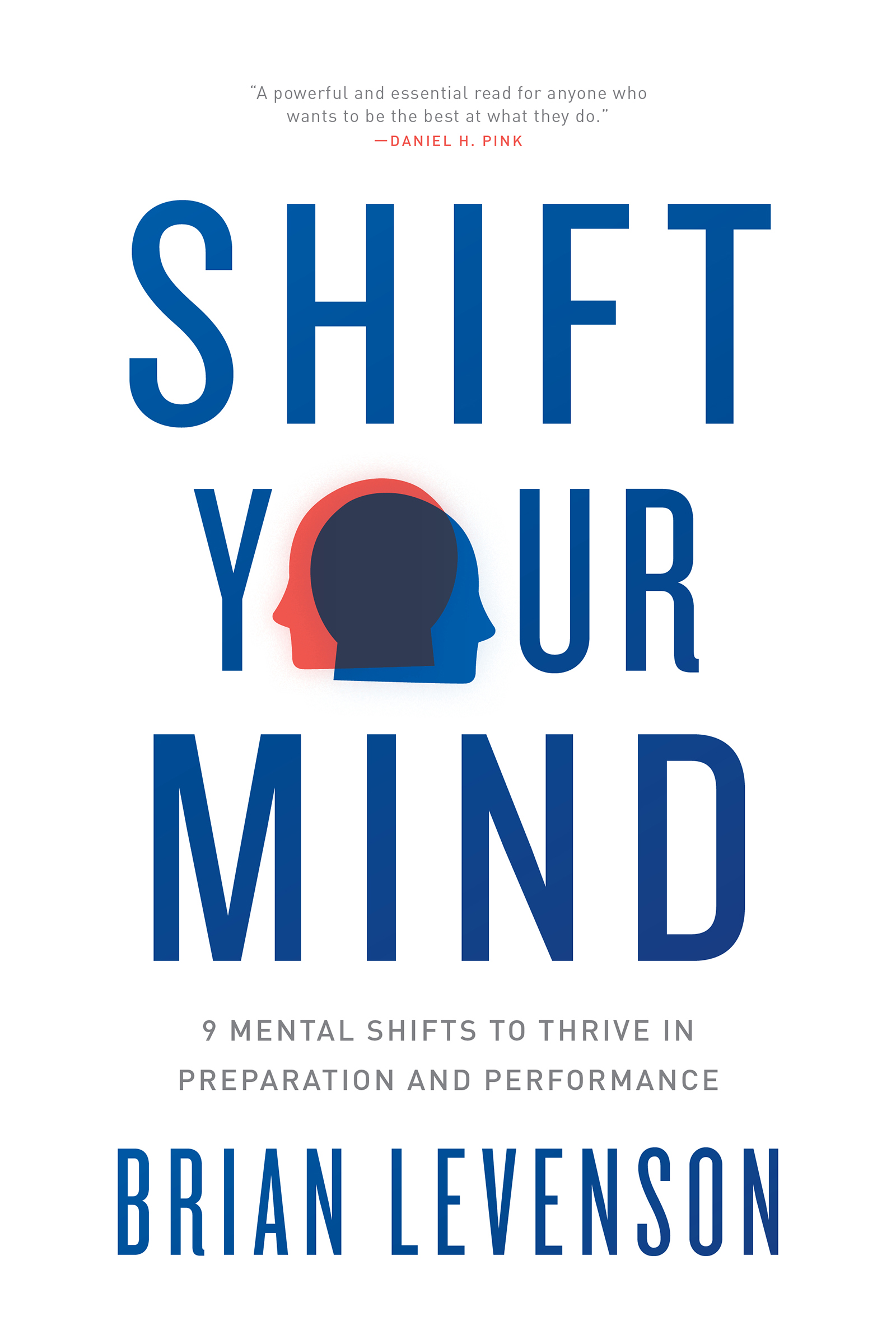Published by Disruption Books
New York, NY
www.disruptionbooks.com
Copyright 2020 by Brian Levenson
All rights reserved.
No part of this book may be reproduced, stored in a retrieval system, or transmitted by any means, electronic, mechanical, photocopying, recording, or otherwise, without express written permission from the copyright holder. Requests for permission should be directed to .
Distributed by Disruption Books
For ordering information or special discounts for bulk purchases, please contact Disruption Books at .
Cover and text design by Brian Phillips Design
Publishers Cataloging in Publication Data
2020913444
Print ISBN: 978-1-63331-046-9
eBook ISBN: 978-1-63331-047-6
First Edition
To Robin, Braden, and Marin, who help me thrive.
To my incredible support system, who help me prepare and perform.
To those lifelong learners, who are still on the path to greatness.
Contents
The Essential Shift between Preparation
and Performance
The Essential Shift Between
Preparation and Performance
Jon was a well-put-together freshman baseball player at a local community college, where he was a backup shortstop. When we had first met, in January 2013, his obvious boyish enthusiasm and confidence made me excited to work with him. As a mental performance coach, I look for two important characteristics in clientsdrive and a desire to learnand Jon checked both boxes. He would listen attentively and scribble notes in his notepad, which he brought to every meeting, and he would email me after every meeting with a recap of what we discussed. Jon also had his heart and mind set on playing pro ball. He had led his high school team in home runs and received interest from Division I schools before deciding community college was his best option.
There was no denying that Jon had big dreams, and happily, his work ethic matched them. He would work out at the gym for two hours a day, and staying after practice to get in extra reps was normal for him. He had even overcome a form of dyslexia (which we discovered during our work together) to get a 3.5 GPA while in high school. He had a simple formula that had worked for him for years: work exceptionally hard and get results.
Yet it was clear within the first month of working with Jon that his hard work was not unlocking success during his first season at college. I had him fill out an assessment that many Major League Baseball (MLB) teams use to better understand the mindset of their players. Jon scored in the ninety-ninth percentile for reduced flexibility, orientation to rules and risks, self-criticism, and anxiety. It was clear that these issues were getting in the way of his performance. When I first chatted with Jons dad, he offered up the idea that Jon lacked confidence. I had heard that from many clients (and parents of clients) before, so it didnt take me by surprise.
When I first met Jon, I didnt think he lacked confidence. How I thought about confidence had shifted a bit about a year earlier, however, when I read an interview with Tom Coughlin, the head coach of the New York Giants. The Giants had just improbably won the 2012 Super Bowl, defeating the New England Patriots, who were considered the favorite. In the week leading up to the game, Coughlin explained to the media that all season long, he had told his guys to be humble enough to prepare, confident enough to perform. It was such a simple quote, but it made a big impression on me. It made so much sense to think that our mindset in preparation should be different from our mindset in performance .
As I thought more about Jon, I realized that he was certainly humble in his preparationready to be coached and to address his weaknessesbut when he started to perform on the field, he stayed in that preparation state. In practice, the team often played a game called 27 outs, which simulated the pressure of a real game by challenging the fielders to play error-free and make 27 outsthe same number needed in a nine-inning baseball game. Jon struggled mightily and talked with me about failing to make routine plays that typically were seamless for him. Jon was overanalyzing, doubting himself when the pressure was on, and this mindset that helped him prepare so thoroughly and carefully was crushing his ability to deliver a strong performance. We had work to do.
I chatted with Jon over the next month about his confidence and where he felt like he had the most of it. He explained that he never lacked confidence when talking to girls and that he felt he had game. He had a girlfriend at the time, so he decided to ask her what his mindset was when they first met and reflect on his approach to that meeting. A few weeks later, Jon sent me an email with his findings, including:
I believe in myself (very confident).
I know what Im going to say before I say it (game plan).
I know that I know how to talk to girls (I am competent).
I dont put any pressure on myself.
Relaxed.
Not humble (cocky).
Both of us were excited by what Jon had learned and our conversations about bringing this type of confidence into baseball. But the following year brought mixed results. He was in and out of the lineup, and finished the season with a .200 batting average. I was perplexed. How could someone who worked so hard and was so confident away from the field struggle once he got between the lines during performance? Was it really a confidence issue, or was something else getting in the way?
We worked on mental skills like self-talk, circle breathing, and visualization. Jon established goals for himself that would help him improve. We determined which systems and processes would allow him to execute plays at his best when it mattered most. His self-awareness was growing, and he had a whole books worth of notes as we approached the next season. Jon was all in.
Once again, though, Jon had highs and lows; in one game he hit two home runs, and in the next he had two strikeouts. Sometimes, he would come into our meetings frustrated and upset, but he never left a meeting feeling that way. He had so much hope, and he continued to work hard. We continued our weekly meetings and built his mental toolbox. Yet Jon still was not getting the results we both knew he was capable of getting. What was I missing? I was puzzled.
Jon finished the season with a solid batting average (.265). He had certainly improved. And when I measured his mental strengths and weaknesses from where we had started, he scored higher across the board. Jons hard work, attitude, and flashes of success helped him earn a scholarship to play Division II baseballbut he didnt achieve his dream of playing pro ball, never quite performing at the peak of his potential when it mattered most.
As I reflected on my time with Jon, I continued to wonder what was getting in the way. I looked back on my database of research, videos, books, and podcasts, and a broader pattern emerged: the best performers in the world shifted their mindset between preparation and performance . Maximizing our preparation requires one mindset. Performing at our peak potential requires a different one.
For years, I studied this binary relationship between the preparation mind and the performance mind. Over and over in my research, my reading, and my interviews and work with elite athletes, top students, Navy SEALs, and successful executives, I came to three critical realizations:
- What we think and when dictates how far we can go and what were capable of when its time to deliver.


